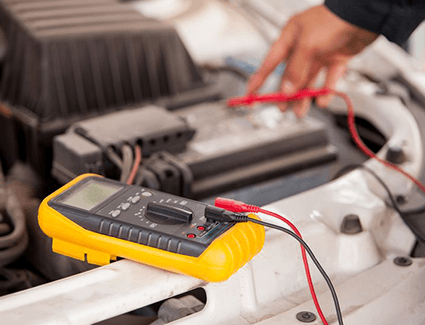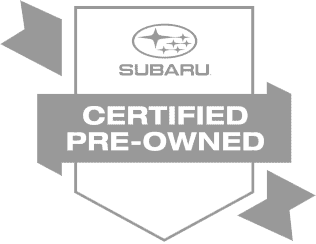

There's something reassuring about those percussive little chirping noises your car makes when you first turn the key -- and the rumble of the engine starting right up and running strong, every time. It's thanks in part to the starter motor, an important under-the-hood component of your vehicle. We identified four things we want you to know about the starter in your Subaru! And if you ever need service on your car, or it just isn't starting up as easily and consistently as it once did, we're glad to lend a hand in our service department.

4. How It Works
When the engine is running under its own power, the force of fuel detonating in the cylinders pushes down on pistons which spin the driveshaft. But, to get the engine started before combustion is occurring in the engine, the starter has to spin the whole engine over all by itself. The starter's tiny gear engages with a huge gear attached to the engine's driveshaft called the flywheel. The starter rotates the flywheel, which turns the engine over just long enough for the combustion cycle to begin.
As you can imagine, it takes a great deal of power for this small starter to turn over the big, heavy engine. It gets this power from the battery. And it's only designed to deliver this power for a couple seconds at a time. That's why letting the engine "crank" over and over when it won't start isn't good for the starter or your battery.

3. Key Component: The Solenoid
An electrical switch called the solenoid receives the electrical signal from the ignition when you turn the key or press the "engine start" button in your car. When it's not in use, only a tiny amount of power is used to send the signal to the solenoid that the key has been turned and the starter needs to engage. Then, the solenoid activates the starter circuit, briefly taking the massive amount of power from the battery in order to start the engine. If the solenoid is bad, the starter won't be able to draw the power it needs to start the engine when you turn the key. Or, if the battery is nearly dead, it might have enough juice to run a few lights and accessories, but not enough to power the starter properly.
2. Key Component: The Pinion Gear
The pinion gear is the part of the starter motor that physically links with the car's engine at the flywheel. The starter rapidly spins the pinion gear to get the engine to spin just long enough to let the combustion process begin.
Like all physical linkages in your car, damage can occur over time. It's not unheard of for the teeth on the flywheel or the notches on the starter's pinion gear to become worn or bent, preventing the starter gear from meshing correctly with the flywheel. If your engine has many thousands of miles on it, it may be worth it for our technicians to take a look at the flywheel and the starter itself if your starter isn't able to do its job properly.

1. Is My Car's Starter Bad, Or Is It Just A Dead Battery?
Of course, far and away the most common cause of a car that won't start isn't the starter itself, but the battery. Perhaps you left a dome light on or an accessory plugged into a charging port. Or perhaps the battery is just old, and ambient temperatures are starting to drop in the winter time. Before you look at the starter, be sure to check the charge on your battery. Consider using a battery recharger to recharge the battery or use a multimeter to perform a battery health test to find out if the battery needs to be charged or replaced. If the battery can't hold a charge, the vehicle's alternator might be faulty. And if the battery and starter are working correctly, but the engine still won't start, it's likely to be a problem with the fuel delivery, spark ignition or intake systems. Stop by the Capitol Subaru service center for a thorough diagnosis from a Subaru expert!
Capitol Subaru of Salem
920 Auto Group Ave NE
Salem, OR 97301
- Sales: 503-587-5500
- Service: 503-587-5500
- Parts: 503-587-5500







